

Collectible items come in diverse shapes, sizes, and values. While the sports card boom has made it look like cards are the only valuable collectible, there are a handful of items worth collecting. These items are timeless and have merit. One of such items is Magazines.
Magazine collection began in 1741 when the first American magazine was published. Since then, it’s grown to be a popular and rewarding pastime. While the current magazine market isn’t as profitable as most collectibles, we can still find value here. Most magazines still retain value and can be sold for impressive sums. Popular issues have sold for as much as $300k.
This introductory guide to collecting magazines shall cover everything you need to know to begin collecting magazines. Let’s get started!
Thousands of magazine titles are released monthly, and most magazines have run for decades. Millions of magazines are available, and not all of them are worth your time. Blindly collecting random magazines and hoping they become valuable would leave you stuck with worthless papers.
While we’ll discuss some magazines worth collecting later in this article, there are a few things to look out for to determine potential value.
Most writers collect magazines from an era when writing a piece on the said era. It helps them capture the “feel” of that period and better describe it in their writing. However, not only writers collect magazines for research purposes.
Hot Rod magazine is also particularly valuable due to the recent spike in hot rods and rat rods’ popularity. Rod builders use these old magazines for hints and inspiration when they work on old cars.
Covers with important new stories and events can be both a blessing and a “curse” for collectors. While magazines that cover significant historical stories and events are in great demand, there’s a supply to match that demand. This supply keeps the price in check. An example is the John F. Kennedy assassination or President Obama’s election.
While these are important events, it was covered by dozens of magazines which increased the print run to match the demand. Asides from the increased number of magazines printed, people likely held onto these issues because of the topics covered.
These factors ensured that hundreds of these issues are in the marketplace, which limits the value. While this is true for many historical events, there are some exceptions.
Most designers or people interested in vintage fashion look for old fashion magazines for research and inspiration. People interested in vintage clothing would especially be interested in magazines such as Vogue, Glamour, Everywoman, and Harper’s Bazaar.
They use these magazines to learn about designs and styles of the past, which are usually recycled. Fashion magazines offer the highest ROI when it comes to magazine collections.
The magazines’ articles, pictures, and illustrations can also significantly increase their value. Such issues are in high demand because of these pictures on their covers. Magazines with illustrations by Harrison Fisher, Charles Gibson, or other artists like Gil Elvgren are worth much more.
Richard Avedon’s psychedelic photo of the Beatles on the January 9, 1968 Look issue makes the issue especially valuable. Authors used to write pieces in magazines, and those pieces can boost the value of said magazines. An example of a writer driving demand for an issue is Martha Gellhorn’s report on the D-Day landing.
Magazines carrying her retelling of events after stowing away in a hospital ship are especially valuable. James Joyce’s works in the New Freewoman are particularly valuable, with a selection of editions selling for $10,000.
Most times, the advertisements in magazines make particular issues appealing to collectors. People frequently decorate their houses with vintage ads – from automobiles no longer in production to beverages long forgotten. The pages containing these historical advertisements make the issue more valuable.
An example of this is National Geographic magazines which are notable for not holding value. However, issues with Coca-Cola advertisements on their back covers are especially valuable
It’s difficult to find the first issue of any magazine; therefore, it’s much more desirable for collectors.
Most magazine issues are in demand because they were initially recalled after production and, therefore, hard to find. This might be due to an error or the desire to highlight a more important story. A notable example of this is Life’s November 1963 issue which was recalled and had the cover replaced with the news of Kennedy’s assassination.
Issues with quarterback Roger Staubach’s cover are especially valuable when found. There are other incidences like this, and the recalled issue has much more value each time.
While most magazines have high-minded reasons that drive demand, some magazines are in demand for simply because they are popular. The Playboy magazine has topped the list of most popular vintage-magazine for several years. No one can deny the collectability of this magazine, and anyone looking to start a magazine collection shouldn’t ignore its potential.
As with most collectibles, grading magazines is done according to condition. Condition is as important as the kind of magazine you choose to collect. A magazine condition can range from “Poor” to “Absolutely Pristine.”
Some professional appraisers offer magazine grading services. An example of such is PastPaper and CGC Magazine Grading
| 10/10: Absolutely Pristine | Perfect. It probably was preserved without even reading it. |
| 9/10: Mint | Almost perfect. It might have only been read once or twice before being perfectly preserved. |
| 8/10: Near Mint | The best realistic rating for vintage magazines. It might look perfect but reveals an apparent flaw upon close examination. Might have a creased page or the loss of cover shine. |
| 7/10: Excellent-Mint | Contains just one minor flaw, a light crease on a few pages and no tear. |
| 6/10: Excellent + | Carefully read a few times. Looks very good with only slight apparent signs of wear. |
| 5/10: Excellent | Very nice looking, without obvious damage or signs of wear/tear. It might show damage upon close inspection. |
| 4/10: Very Good | Properly stored but showing noticeable damage from aging and repeated reading. Signs of splits, rubbing, light soiling, or creased covers. One of these is enough to warrant a VG grading. |
| 3/10. Good | Complete with no missing or detached pages but contains damages, such as torn page edges. Might have issues with the binding or little stains on the cover. |
| 2/10: Fair | Contains considerable damage, such as detached covers or cut-out pages. Issues without covers are also graded “Fair,” even if they’re decently preserved. |
| 1/10: Poor | Contains significant damage with missing pages, heavy soiling, and staining. |
You could use this table to appraise your magazines and grade them yourself. However, magazines graded and certified by these services are worth more than uncertified copies.
You can check out the popular magazine grading service providers to see how much it takes to grade your magazine. A copy in a 10/10 condition would sell over 500 times what a 1/10 rank would go for.
As a result, knowing the grade of your magazine is important if you wish to make a profit collecting magazines. Lastly, you shouldn’t be discouraged if your magazines aren’t in mint condition. While the condition does affect value, many “Good” or “Fair” graded issues have sold for impressive sums.
The key to success with collecting magazines is to know what magazines are worth collecting. Thousands of magazines are available; some are simply “dust collectors .”The choice of what to collect is ultimately your decision. However, it would be best if you collected magazines already in demand.
America’s first all-photographic magazine, Life, used timeless photography to document history as it happened. It was a crucial weekly publication and, through its run, had some of the greatest photographers, editors, writers, and illustrators. Its subject matter comprised everything that had to do with “Life .”It covered celebrity life, politics, horrors of war, and any news worth discussing.
First published in 1952, Mad is an American humor magazine that became a reader’s favorite. This famous publication was never afraid to push the boundaries of humor and delved into politics for inspiration. It recently ended its 67-year run, which further increased its value.
Founded in 1923, Time is an American news magazine that has run for over a century. It’s one of the most informative and authoritative guides to current happenings across all sectors, including entertainment, science, health, business, politics, and current affairs.
Time magazines have amazing value for collectors because it’s been a trusted source for world news. It provided accurate content covering all important news issues.
Asides from being one of the most collected magazines, the record for the top 3 most expensive magazine sales is held by Playboy magazines. Playboy announced they’ll stop publishing pictures of fully naked women in 2015 and switched to an online-only magazine in 2020.
These two factors have seen the prices for vintage issues of Playboy magazine steadily increase in value, much to the benefit of your Playboy magazine collection.
While the men’s magazine of our time is populated with men’s mental health and other similar topics, these men’s magazines catered to a different generation. They are dominated by stories of “unfettered manliness” to cater to a readership that had experienced the horrors of war.
Rather than articles about luxury locations, these magazines were dominated by fictional stories of war, the Old West, and crime. They’re in high demand even to this day.
Boys’ Life was first published in 1911 by George Barton. Published by the Boys Scout of America, it offered practical facts, advice, and DIY projects. It also highlighted the scouts’ accomplishments as well as their service projects.
The magazine George was co-founded and edited by John F. Kennedy Jr. It centered on politics but was written in a way readers would find interesting to read – politics-as-lifestyle. While its run was short, it was infamous, and there’s quite a demand for it.
Look was a general interest magazine that catered to everyone. It promised to have readers’ interest in “yourself, your wife, your private secretary, and your office boy .”This vast readership played a part in ensuring Look’s success, and it retains good value even now.
Teen was a lifestyle magazine for teenage girls. Its content included entertainment news, advice, fashion tips, beauty guides, quizzes, celebrity role models, and real-life stories. Thanks to the fashion aspect highlighted, Teen has great collectability value today.
The Saturday Evening Post is one of America’s oldest magazines. It thrilled millions of readers each week with fiction, articles, commentary, and iconic cover. While it published human interest articles and national news, it was especially famous for literary fiction and its illustrations.

https://cdn2.picryl.com/photo/1903/12/31/saturday-evening-post-1903-11-28-a-c8543c-1024.jpg
This was the first magazine dedicated solely to publishing science fiction stories. It launched in 1926 and is credited for helping define and launch the popular pulp fiction genre. These stories are a part of the reason it remains in demand even today.
This American cooking magazine was popular for its detailed instruction and extensive recipe testing. While you’ll not find any ads on this as they didn’t accept adverts, its thorough evaluation of the time’s ingredients, recipes, and kitchen equipment made them popular.
The American Sports Illustrated magazine was first published in 1954 and targeted the sportsman. The magazine wrote articles on tennis, skiing, golf, and all major sports. It introduced several innovations and was the first magazine to win the National Magazine Award for General Excellence twice.
Published by ESPN sports, ESPN Magazine covered all major sports of the time, from college football to Major League Baseball, National Basketball Association, College Basketball, and National Hockey League to the National Football League.
ESPN took a humorous and lighthearted approach to report sporting news compared to other publications like Sports Illustrated.
This spin-off of the Sports Illustrated magazine was geared to cater to a much younger audience. While it included sports coverage, it emphasized humor and used words that were easier to understand. Its publication included humorous captions of sports pictures, fun player interviews, child reporters, and fun comics.
Each edition of SI4Kids featured trading cards within the magazines. These cards showcased several iconic athletes and helped increase kids’ awareness of trading cards collection.
These cards are collectibles in their rights, and several have sold for impressive sums. Here’s an article that reviews SI4Kids cards if you want more information on the topic.
Brooklands Gazette, now Motor Sport, was founded in 1924 to cover motorsport. Today, it’s the leading magazine on both historic and modern racing. It also has great collectability value, and copies sell for decent sums.
Like most collectibles, autographed magazines are worth more than their unsigned counterparts. Magazines with the right signatures can fetch you quite a handsome sum. An example is a 1989 Fortune magazine signed by Steve Jobs, which sold for $16,000.
At the turn of the last century, magazines were filled with beautiful covers from several “Golden Age” illustrators. Magazines with the autographs of said artists are in high demand by collectors.
As expected, the most important factor determining an autographed magazine’s worth is the person who signed it. The more iconic the person, the more the magazine is worth. Here are a few other factors to consider when looking at the value of signed magazines:
Whether you’re looking to store a magazine because of sentimental values, plan on selling it off, or simply love an article, you should learn to store your magazines properly. Condition is as important as the type of magazine you choose to collect regarding value.
Magazines with a 10/10 condition grading can fetch up to 1000X more than the same issue with a lower grade. Properly storing your magazines prevents dirt, moisture, and bugs and keeps the magazine from being damaged. Properly preserved magazines can stay in pristine conditions for years.
Here are a few steps to correctly preserve your magazines.
This preserves the magazine’s pages, helps it retain that smooth look, and keeps pages from sticking together. An acid-free tissue paper is the most economical option. Simply put it between each page in the magazine. If you’re only interested in certain pages of the magazine, simply separate those pages with acid-free tissue paper.
After separating each page with acid-free tissue paper, put individual magazines in a plastic sleeve. Plastic sleeves keep moisture and dust away. There are available in various sizes and can be purchased at any office supply store. For extra protection, you can wrap the magazine with packing paper before putting it into the sleeve.

Place an acid-free backer board or a piece of corrugated cardboard under the backside of the magazine. This offers support and keeps the magazine flat, avoiding damages from folding.
Stack your sleeved magazines upright in an archival corrugated storage box. Boxes with metal corners are recommended as they offer solid support.
You should keep the storage boxes away from direct sunlight to prevent fading (sunning). A cool dark place with low humidity is the best option. Damp papers collect mold, which will degrade your papers. This can be in the basement or a closet. Ensure boxes are placed above ground to reduce moisture damage and avoid pests from getting to them.
Older or out-of-print magazines are understandably worth more than new magazines. eBay is a good place to find these magazines. However, buying from eBay is unsuitable unless you’re purchasing an issue for sentimental reasons.
If you wish to start collecting old magazines in hopes of a potential ROI, you need to find magazines elsewhere. These are your best bets for getting vintage magazines cheap or even free!l
People often donate large quantities of magazines to libraries and bookstores. Over time, these magazines pose a storage problem. While most libraries recycle these old magazines, some give them out for free. Check your local library and bookstores; you might get a valuable hoard of magazines for free.

Let people know you’re now collecting magazines. Most people would be happy to have you take their old magazines off their hands.
Another place to get vintage magazines is from people moving or cleaning out their houses. You could ask if they have any old magazines they want to get rid of.
You can also get tons of old magazines from yard/garage sales. People would probably be looking at freeing up some space and giving these magazines for less than a dollar. Watch out for signs and check the local papers. Even if the magazine isn’t one you’re looking at collecting, it’s wise just to take what’s on offer. Other methods include:
Collecting magazines can be quite a rewarding hobby. It’s easy to think you can only find value in collecting vintage magazines. However, this is inaccurate. You do not need to collect magazines from the 80s to make profits.
Magazines printed as recent as 1997 have sold for up to $10,000. While you might not get to sell any of your collection for $10k, there’s great value to be found in collecting magazines.
The best part is that this demand would only increase over time as publishers gradually switch to electronic magazines. The recent trading card boom has many people asking, “Which collectible would experience a boom next”? If I were a betting man, I’d place a large sum on vintage magazines.
Topps Chrome 2024-25 Basketball: Honest Review and Notes
Did you know this SECRET about PSA slabs? #sportscard #tcg
5 EASY tips to make more money on eBay sports cards.
I opened a sports card mystery box and found something AWESOME inside
The SAD story of Collectable. What went wrong? (The Downfall Fractional Sports Card Investing)
what was Panini doing? 🙄
I compared sports card prices from the big sellers to save YOU money
Is GameStop buying PSA? (the truth!)


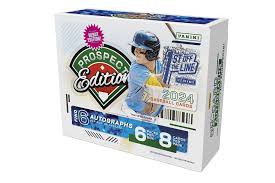
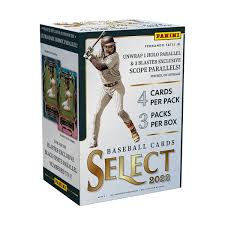
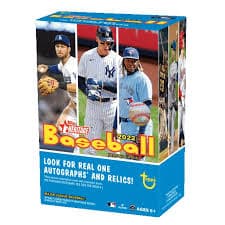
2022 Topps Heritage Baseball Blaster Box Configuration: 7 Packs per Box – 9 Cards per Box. Plus 1 extra pack.
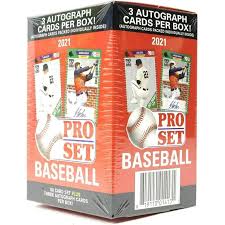
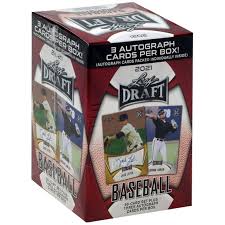
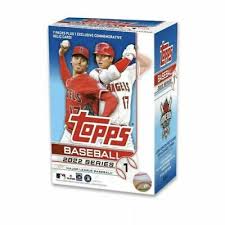


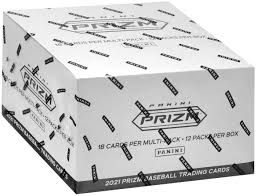



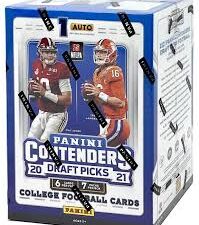

Keep up on breaking Sports Card News, our latest articles, product specials and exclusive content with expert analysis of hobby trends.

© Copyright 2025 - All rights reserved Cardlines.com / Media Techs LLC - Sports Card News, Reviews, Releases and BREAKS - #thehobby.
Important: When you click on links to various merchants on this site and make a purchase, this can result in this site earning a commission. Affiliate programs and affiliations include, but are not limited to, the eBay Partner Network.
Panini is launching a WNBA Product at $30,000!?
Cardlines June 27, 2025 5:54 am